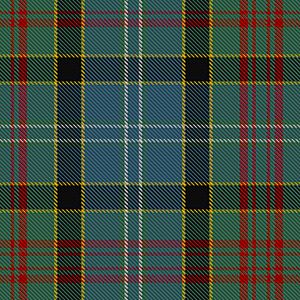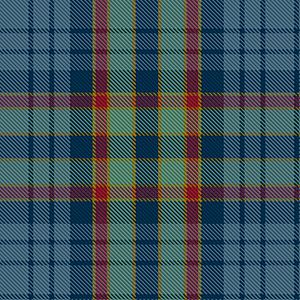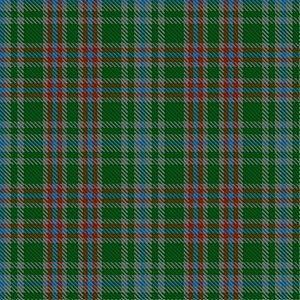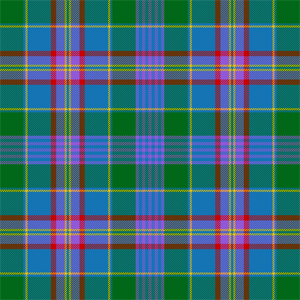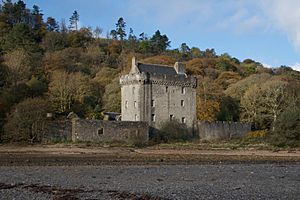Clan Ralston facts for kids
Quick facts for kids Clan Ralston |
|||
|---|---|---|---|
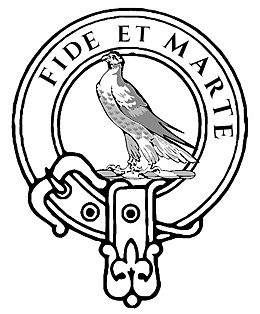 |
|||
| Motto | Fide Et Marte (With fidelity and bravery) | ||
| Profile | |||
| Region | Scottish Lowlands | ||
| District | Renfrewshire | ||
| Clan Ralston has no chief, and is an armigerous clan | |||
| Historic seat | Ralston, Paisley, Renfrewshire Woodside-Ralston, Beith, Ayrshire | ||
| Last Chief | Gavin Ralston of that Ilk | ||
| Died | June 1819 | ||
|
|||
|
|||
Clan Ralston is a historic Scottish clan. A Scottish clan is like a large family group, often with a shared history and a chief. While Clan Ralston is recognized by the Court of the Lord Lyon, it does not currently have a chief. This means it is known as an Armigerous clan.
Contents
History
Where the Clan Began
The Ralston name comes from an old area of land near Paisley, Renfrewshire. The name "Ralston" is a shorter way of saying "Ralph's Town." Over time, this name changed to the spelling we use today. The name Ralph comes from an old English word meaning "cunning wolf." Like many Scottish names, the spelling has changed a lot over the years. You might see it as Roulston, Rolston, or Ralstone.
One popular story says the Ralston family started with a man named Ralph. He was the younger son of an important Earls of Fife. Ralph supposedly received land and named it after himself. His family then took the name Ralston. However, there is not much proof for this story. Some researchers think the first Ralph might have been Ralph the Chaplain of Paisley. He owned nearby lands in the late 1100s. Because old records are missing, we may never know for sure who the very first Ralph of Ralston was.
Another fun story says the name came from a family who were good at rolling heavy rocks down hills in battle. This led to the name "Rollingstone," which later became Ralston.
The first time we see a mention of this family is in 1219. A person called Jacobus de Rauliston was a witness to an event at Paisley. Later, in 1296, Hew de Ralstoun and his brother signed the Ragman Roll. This was a document where Scottish nobles promised loyalty to Edward I of England. In 1346, Jacobus de Raulyston of that Ilk was mentioned. "Of that Ilk" is an old and honorable title. It means the person's name is the same as the name of their land.
The Stewarts and Ralston Lands
It is not clear who the chiefs were between 1346 and 1426. Some historians believe the original family line might have ended. Then, a new family might have taken over the name. Or, the name might have been passed down through a female heir. It is thought that the Stewart family helped continue the Ralston name.
Around this time, an area in Cunninghame near Kilmarnock, Ayrshire was called "Railstoun." Sir John Stewart of Ralston owned it. He passed it to his son Walter. We do not have records of Walter having children. However, he is often thought to be the father of John de Ralston. This would make sense given the naming traditions of the time.
In 1416, Walter Stewart gave up his lands in Ayrshire. These lands later passed through different families. After this, the Ayrshire lands of Ralston are not mentioned as often.
The 1400s and 1500s
In 1426, John de Ralston was a chaplain and secretary for a powerful noble. By 1442, he was part of King James II of Scotland's court. In 1447, he became the Bishop of Dunkeld. He also served as the king's treasurer. His nephew, also named John Ralston, became the next Lord of Ralston.
Around 1505, John Ralston of that Ilk passed his lands near Paisley to his oldest son, Thomas Ralston. Thomas then traded these original Ralston lands for other lands where he lived. Some Ralston family members stayed in Renfrewshire. Others moved to Ayrshire with Thomas. Thomas died in a battle called The Battle of Flodden. His son, also named Thomas, became the next chief.
This second Thomas had no children. So, his brother Hew became the chief. Hew died in another battle, the Battle of Pinkie Cleugh. Hew's son, also named Hew, bought new lands in 1551. He built a tower house there and named the place "Woodside-Ralston." This home became the main seat of the clan for many years. Hew's grandson, William, became the next heir.
The 1600s
William Ralston was the second son of Hew Ralston. He started a new branch of the family called the Ralstons of Auchentorlie. This family grew in areas around the original clan home, like Paisley and Glasgow. These were like smaller family groups within the larger clan.
In 1610, John Ralston received a large amount of land in Northern Ireland. This was part of a plan to settle Scottish and English people there. While this plan was not very successful, many people in that area today still have the Ralston last name.
In 1643, William Ralston of that Ilk expanded the Ralston family lands. He bought more properties. William was a well-educated man who supported the king. He was also a strong Covenanter, meaning he supported a religious movement in Scotland. He even fought in battles alongside Archibald Campbell, 1st Marquess of Argyll.
In 1650, William was given lands in Kintyre. He was asked to help restore Saddell Castle. He moved part of his family to these new lands.
William was arrested in 1665 during a time of conflict. He was held in Dumbarton Castle. He was released in 1667 and returned to Kintyre. He spent the rest of his life as a church elder.
William was the first Ralston to have a registered coat of arms. This happened in 1672. A coat of arms is a special design that represents a family. The Ralston coat of arms shows a silver shield with a blue band. On the band are three acorns. The crest is a falcon. The motto is "Fide et Marte," which means "With fidelity and bravery."
The 1700s to Today
Gavin Ralston of that Ilk became the next chief. In 1704, due to financial difficulties, Gavin sold the old family lands of Ralston near Paisley. However, he was allowed to keep his special title, "Of that Ilk." His son, William, later became chief.
William's son, Gavin, became chief at a young age. This Gavin Ralston spent some of his younger years in Virginia, working with a cousin. When he returned to Scotland, he married Anabella Pollock. He also made improvements to the family home at Woodside. In 1771, Gavin sold the Woodside-Ralston property to help pay off family debts.
In 1780, Gavin inherited lands from his father-in-law. He became a respected businessman in the textile industry. He passed away in June 1819 at the age of 85. He did not have any children who lived longer than him. This meant he was the last direct chief of the Ralstons of that Ilk.
Tartans
Clan tartans are special patterns of fabric that represent a clan. They became popular around 1815. Before that, most tartans were based on local areas. The colors often depended on the dyes and threads available. In 2008, the Scottish Parliament created The Scottish Register of Tartans. This helps to keep track of all claimed tartans.
Clan Ralston does not have a tartan officially recognized by a chief. However, there are several registered tartans linked to the family:
- Paisley District
* This tartan was designed by Alan C Drennan and registered in 1952.
- Ralston (UK)
* Designed by Robin Elliot and Alison Ralston, registered in 2006.
- Ralston (USA)
* Designed by Michael T Ralstin, registered in 2003.
- Ralston (Universal)
* This tartan is supported by Scotclans.com. The designer and date are not listed.
List of the Chiefs of Ralston
The exact list of chiefs can sometimes vary between different historical records. However, a common line is generally accepted, starting with John de Ralston. According to George Robertson's book, "Topographical Description of Ayrshire," the line is as follows:
- Ralph, of Paisely and Ralston
- Jacobus de Raulyston, dominus ejusdem
- Nicholaius de Rauilston
- Thomas de Ralfestone, Counte de Lanark
- Jacobus de Rauliston, of that Ilk
- (unknown, possibly Sir John Stewart of Ralston)
- (unknown, possibly Walter Stewart of Ralston)
- John de Ralston, Bishop of Dunkeld and keeper of the Privy Seal. Succeeded by his nephew:
- John Ralston of that Ilk. Married to Hawes Wallace
- Thomas Ralston of that Ilk, fell at the battle of Flodden
- Thomas Ralston of that Ilk. Succeeded by his brother:
- Hew Ralston of that Ilk, fell at the battle of Pinkie Cleugh. Married to Janet Whiteford
- Hew Ralston of that Ilk. Married to Janet Hamilton of Torrance. Succeeded by his grandson:
- William Ralston of that Ilk. Married first to Ursula Mure of Glanderstoun, secondly to Jean Dunlop of Dunlop. Succeeded by his grandson:
- Gavin Ralston of that Ilk. Married to Anna Porterfield of Porterfield
- William Ralston of that Ilk. Married to Marion Ewing of Cadder
- Gavin Ralston of that Ilk. Married to Annabella Pollock of Aurthurlie.
The direct line of chiefs ended with Gavin Ralston. None of his sons lived longer than him to take on the title.
Castles
- Ralston Castle: This castle was located two miles north of Paisley. The Ralston family owned it from the 1200s. In 1704, the property was sold. The original castle was replaced by Ralston House in 1810, but that house was torn down in 1934.
- Woodside House: This house is about a mile north-east of Beith in Ayrshire. It includes an old tower house built in 1551. The Ralstons owned it from 1551 to 1772. It has been changed and added to over the centuries.
- Saddell Castle: This castle is in Kintyre. It was built in 1507. While Clan Campbell controlled the area, the Ralstons lived there as tenants. They updated the castle in the 1650s. A new house, Saddell House, was built nearby later. However, the castle has been restored and can now be rented for holidays.
See also
- Scottish clan
- Armigerous clan
- Kilmaurs Place
- The Lands of Roughwood
- Ralston, Renfrewshire
- Ralston (surname)


